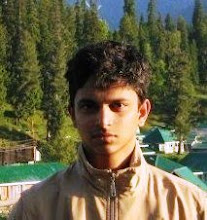 |
| Rozario performs at the Monte chapel. Photo by Bibhav Behera |
Nigel Britto
One of the most evocative impressions of the Monte music festival is that of classical dancers performing on the outdoor stage, against the backdrop of the setting Sun. On Saturday evening, the Jhelum Paranjape troupe from Mumbai had that privilege. Cameramen lined up, in front of the stage and by the windows of the chapel's gallery above, for that perfect shot of the Sun as an extension of the dancers' routine, before it disappeared once more beyond the horizon, and twilight began.
Even at the festival, famed for its patronage of the fusion between the east and the west, a mix of Indian classical dance and Christmas in an extraordinary combination. Paranjape, however, closed his troupe's performance with precisely that-Odissi set to a recording of slow carols rendered by Jim Reeves' smooth baritone. In doing so, the troupe provoked gasps from the audience viewing from the chapel's windows, as the dancers veered periliously close to the stage's rear edge, beyond which lay an open invitation to tragedy.
If fusion is one of the Monte festival's trademarks, another is the constant encouragement of young talent. Over the years, several aspiring Goan musicians have found new audiences at the Monte. On Saturday, Sonia Shirsat provided the festival its melancholy quotient, singing fados (Portuguese folk songs, usually mournful), along with a number of aspiring fadistas, who got a song each. It was meant as an exhibition of young talent, but also unwittingly revealed the ground that these young singers, some in their early teens, still have to cover before truly belonging on the same stage as Shirsat. Dueting with the seasoned fadista seemed to defy the purpose as the young voices, barring a couple, paled when pitted alongside 'India's best fadista.'
The gradual build up of intensity on Saturday culminated with the festival's most accomplished artiste ever, Patricia Rozario, the Goan-origin British soprano who finally debuted at this uniquely-Goan setting with a concert of religious music. Few, if any, music lovers would miss experiencing the state's best-known classical voice at its best setting in a chapel that boasts its most incredible acoustics. The packed Our Lady of the Mount chapel waited with bated breath, as did the pigeon peering down from the ledge above the altar (replacing the chapel's large grey owl, a regular feature at past Monte festivals).
When it finally started, it was a serenade of voice and piano; the acoustics mandated that no amplification got between source and listener. Even though the repertoire was almost-fully German, with J S Bach getting more than his fair share of the cake, nobody complained. The language barrier turned irrelevant as English translations were provided to all, even as the in-form soprano conspired with Bach and the splendid setting to unleash her best performance on Goan soil to date. She performed four Bach pieces (two each from St John's and St Matthew's Passions) in German before the language got a little more familiar to most Goans.
When Rozario started her career, she always sang in a sari. She says she'd wanted to assert her Indian identity. At the Monte on Saturday, she evidently also wanted to assert her Goan roots. Thus, two Konkani hymns found their way into the programme-Aple maie vinnem by Fr Vasco do Rego, and Monte Saibinnik Git by Fr Romeo Monteiro. Throughout, she was accompanied by the rock-solid Ryan Lewis, a Britain-born, Mumbai-based pianist.
However, it was towards the end of the programme that Rozario really hit her peak. It was in Mozart's Et Incarnatus Est from his C minor Mass. Rozario, adding to that 'sanctity' that Latin always provides, unleashed a volley of dazzling vocal histrionics that penetrated the chapel's walls and flowed down the slope leading to it. At its height, the soprano's scaling voice soared so rapturously over the phrases that even the pigeon, so far still and to its credit quieter than some cell phones in the chapel, flew across towards the rear end of the chapel to observe the proceedings from there.
Next, in the blink of an eye, Rozario was her usual, assured self, tackling Mendelssohn's Hear Ye, Israel, the last hymn and the only English one in the programme. When she was done, she obviously wasn't let off so easily. The crowd's demands for an encore were met by Schubert's timeless Ave Maria, a favourite in Goa and a warm, familiar way to end one of the most power-packed days in the history of the Monte music festival.
This article was first published in The Times of India, Goa, on its edition dated February 6, 2012.

No comments:
Post a Comment